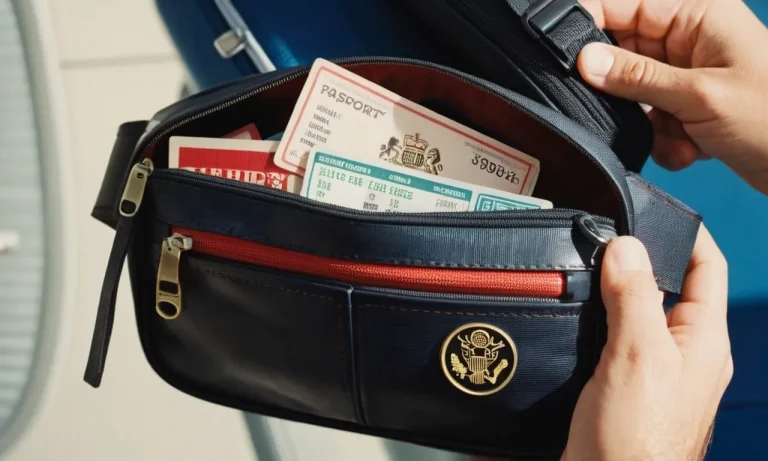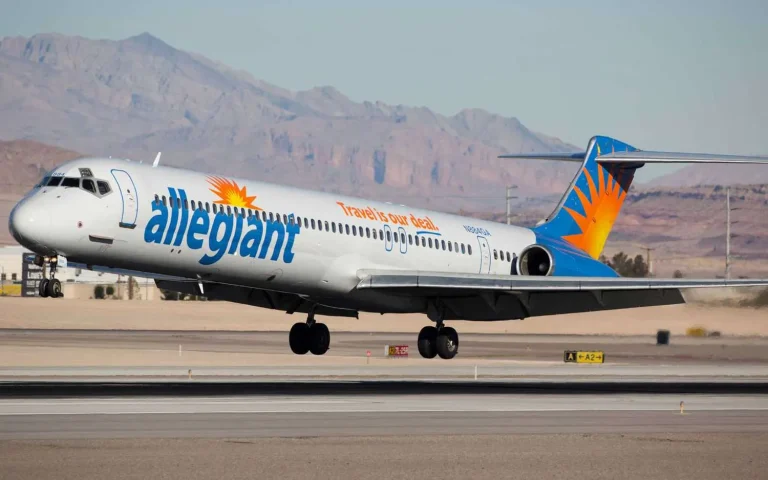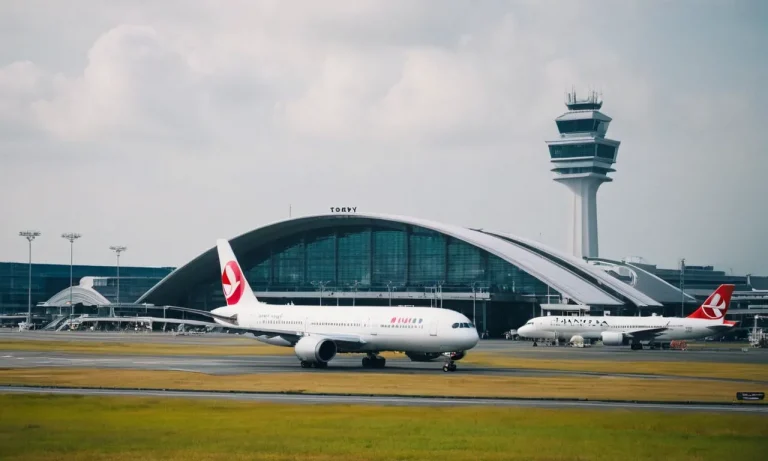Traveling through airports can be a confusing experience, especially if you’re not familiar with the different parts of an airport.
As you make your way from ticketing to your gate, you’ll likely come across signs pointing you toward something called a “concourse.”
But what exactly is a concourse in an airport?
If you’re short on time, here’s a quick answer to your question: A concourse is a large, usually linear hall or passageway in an airport that connects the main terminal to the gates.
Concourses contain restaurants, shops, restrooms, and seating for passengers as they wait for their flights.
In this comprehensive guide, we’ll give you a detailed look at what an airport concourse is, what you can find there, and how concourses connect the different parts of an airport.
What is an Airport Concourse?
An airport concourse is a crucial component of an airport terminal. It serves as a pathway that connects the main terminal building to the departure gates.
This long hallway is designed to handle a large number of passengers efficiently and provide them with various facilities and amenities to enhance their travel experience.
A Long Hallway Connecting the Terminal to the Gates
The airport concourse is essentially a long, spacious hallway that extends from the main terminal building to the departure gates.
It is designed to accommodate the flow of passengers and their belongings, allowing them to move seamlessly from one point to another.
With its strategic layout and directional signage, the concourse ensures that travelers can easily navigate their way to their designated gates.
Contains Amenities Like Restaurants, Shops, and Lounges
One of the notable features of an airport concourse is the presence of various amenities. Passengers can find a wide range of facilities such as restaurants, cafes, bars, and shops offering a variety of products and services.
These amenities cater to the diverse needs and preferences of travelers, providing them with options for dining, shopping, and relaxation before their flight.
Additionally, many airports have airline lounges located within the concourse, offering premium services and comfort for business class travelers or members of frequent flyer programs.
Allows Passengers to Get to Their Gates
The primary function of an airport concourse is to provide passengers with a direct route to their departure gates.
As travelers make their way through the concourse, they can access the different boarding areas where their flights are scheduled to depart.
The concourse typically consists of multiple gates, each clearly marked with flight information displays, making it easy for passengers to identify their specific gate and boarding time.
By efficiently connecting the terminal to the gates, the concourse ensures that passengers can reach their destinations in a timely manner.
Where are Airport Concourses Located?
Airport concourses are strategically positioned within the airport layout to efficiently handle the flow of passengers and aircraft. They can be found in various locations, depending on the airport’s design and configuration.
Here are some common locations where airport concourses are typically situated:
Attached to the Main Terminal Building
Many airports have concourses that are directly attached to the main terminal building. These concourses serve as extensions of the terminal, providing additional space for passenger services, boarding gates, and other airport facilities.
Passengers can easily access these concourses by walking through the terminal and following the signs to their designated gate.
Accessible After Passing Through Security
Another common location for airport concourses is beyond the security checkpoint. After passengers have gone through the necessary security procedures, they can proceed to the concourse area where the boarding gates are located.
This setup ensures that only screened passengers have access to the concourses, enhancing security measures within the airport.
Organized by Terminal and Gate Numbers
Airport concourses are often organized based on terminal and gate numbers. For example, a large airport may have multiple terminals, each with its own set of concourses.
These concourses are then further divided into sections or gates, which are numbered for easy navigation.
Passengers can refer to their boarding pass or consult airport signage to determine the specific concourse and gate they need to reach.
It’s important to note that the location of airport concourses can vary from airport to airport. Some airports may have a single concourse, while others may have multiple concourses spread across different areas of the airport.
The layout and design of these concourses are carefully planned to ensure efficient operations and a seamless travel experience for passengers.

What Can You Find in an Airport Concourse?
Restaurants and Food Courts
One of the most important features of an airport concourse is the availability of restaurants and food courts.
Passengers can find a wide variety of dining options to suit their tastes and preferences. From fast food chains to upscale restaurants, there is something for everyone.
Whether you are craving a burger and fries or a gourmet meal, the concourse has got you covered. It’s a great opportunity to grab a bite to eat before or after your flight.
Shops and Retail Stores
Another key feature of an airport concourse is the presence of shops and retail stores. Travelers can explore a range of stores offering everything from souvenirs and luxury goods to clothing and electronics.
Whether you’re looking for a last-minute gift for a loved one or simply want to browse the latest fashion trends, the concourse has a diverse selection of shopping options.
It’s a perfect chance to indulge in some retail therapy while waiting for your flight.
Lounges and Waiting Areas
Airport concourses also provide passengers with comfortable lounges and waiting areas. These spaces are designed to offer a relaxing environment where travelers can unwind before their flight.
Lounges often provide amenities such as comfortable seating, complimentary snacks and beverages, and access to Wi-Fi.
They are especially beneficial for frequent flyers or those who have longer layovers, allowing them to wait for their flight in style and comfort.
Restrooms and Water Fountains
Restrooms and water fountains are essential facilities found in airport concourses. These facilities ensure that passengers have access to clean and sanitary restrooms during their journey.
Water fountains are also conveniently located throughout the concourse, allowing travelers to stay hydrated before boarding their flight.
It’s important for airports to provide these amenities to ensure the comfort and well-being of their passengers.
Charging Stations and WiFi
In today’s digital age, access to charging stations and Wi-Fi is a must for travelers. Airport concourses understand this need and provide ample charging stations where passengers can charge their electronic devices.
Additionally, most airports offer free Wi-Fi access, allowing travelers to stay connected throughout their time in the concourse.
Whether you need to catch up on work, stream your favorite show, or stay connected with loved ones, the concourse has you covered.
Navigating the Concourse to Your Gate
When traveling through an airport, one of the most important things to know is how to navigate the concourse to reach your gate.
The concourse is the area of the airport where passengers can find various amenities, such as shops, restaurants, and lounges, as well as their departure gates.
Here are some tips to help you find your way:
Understand Your Terminal and Gate Numbers
Before you embark on your journey, it’s essential to familiarize yourself with your terminal and gate numbers. These numbers can typically be found on your boarding pass or through the airline’s mobile app.
Knowing this information in advance will save you time and prevent any confusion or last-minute rushing.
Follow Signs to Your Concourse and Gate
Once you arrive at the airport, follow the signs directing you to your concourse and gate. Airports are designed to be easy to navigate, with clear signage throughout the terminals.
Look for signs indicating your airline or gate number, and follow the arrows or directions provided. If you’re unsure, don’t hesitate to ask airport staff for assistance.
Ask for Help from Airport Staff If Needed
If you find yourself feeling lost or unsure of where to go, don’t hesitate to ask for help from airport staff. They are there to assist passengers and can provide you with directions or answer any questions you may have.
Airport staff members are easily recognizable by their uniforms or badges and are usually stationed at information desks or roaming throughout the terminal.
Give Yourself Plenty of Time
Lastly, it’s crucial to give yourself plenty of time to navigate the concourse and reach your gate. Airports can be busy, especially during peak travel times, and unexpected delays or long security lines can occur.
Arriving early will give you ample time to find your gate, explore the concourse, and complete any necessary airport procedures before your flight.
Remember, navigating the concourse to your gate doesn’t have to be a stressful experience.
By understanding your terminal and gate numbers, following signs, asking for help when needed, and giving yourself plenty of time, you can ensure a smooth and hassle-free journey through the airport.
Conclusion
Airport concourses are indispensable parts of the airport experience, allowing you to easily get to your departure gate and providing conveniences to make your wait more comfortable.
By understanding what a concourse is and what you can find there, you can better navigate these transit halls on your next airport journey.
So next time you’re traveling through the airport and see signs pointing towards concourses A, B, C or beyond, you’ll know exactly what that means and what to expect. Safe travels!






